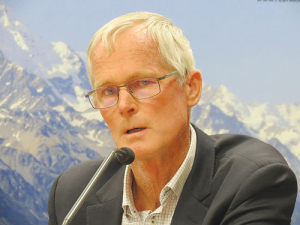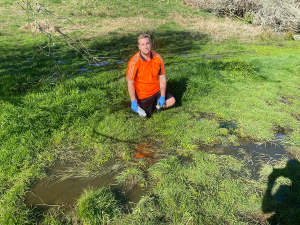Dairy farmers are being asked to approve a levy of up to 3.9 cents/kgMS over the next two seasons to pay their share of the Mycoplasma bovis eradication effort.
With DairyNZ’s regular levy now 3.6c/kgMS, the proposed levy would more than double farmers’ total levy payments.
DairyNZ emphasises that 3.9c is the proposed maximum, chosen to enable the bulk of the M. bovis response to be paid off in the first two years and it “would be substantially decreased thereafter”.
A 3.9c/kgMS levy represents about $6100 per year, for those two years, for an average farm milking 430 cows.
DairyNZ has published the figure as it began a three-week consultation and “strongly encouraged” to give feedback on the proposal.
When the Government decided last May to start eradicating M.bovis, it estimated this would cost $870 million over ten years. The Government will pay $591m, the dairy sector $262m and the beef sector $17.4m.
DairyNZ and Beef + Lamb NZ will each strike their own levy after consulting their farmers.
“The consultation on the response levy is now underway and we want to hear from every dairy farmer,” says DairyNZ chair Jim van der Poel.
“Eradication is looking achievable and this is a great outcome for NZ. Partnering with the Government has greatly cut the costs of managing the M. bovis response, and we are grateful for the support of the government and the public.”
DairyNZ has posted information packs to all dairy farmers and will hold nine meetings NZ-wide from February 18-22. Consultation will end on February 28 then DairyNZ must make a recommendation to MPI.
The levy would come into effect on June 1, and be collected and paid in the same way as levies under the Commodity Levies (Milksolids) Order 2014, i.e. dairy processors will pay the levy and recover it from suppliers.
Beef farmers will pay their share through a separate levy at slaughter, dairy cull cows will not be subject to the BLNZ levy so dairy farmers will not be paying twice.
“We understand that the financial contribution to the M. bovis response, via the levy, will be challenging for some farmers,” van der Poel says.
“However, we believe it was the right decision to eradicate rather than let the disease spread through our stock. Letting it spread would have been a more serious challenge with much higher, longer-lasting costs.”
The biosecurity response levy has officially been in place, but at a nominal level (essentially zero) since DairyNZ joined the Government Industry Agreement for Biosecurity Readiness and Response (GIA) last year.
Ramping it up to tackle M. bovis will be the first time it has been invoked to deal with a specific biosecurity threat.
DairyNZ says the rate will be reviewed annually and will reduce markedly once the costs of the M. bovis response are recovered, unless another biosecurity response is required.


















